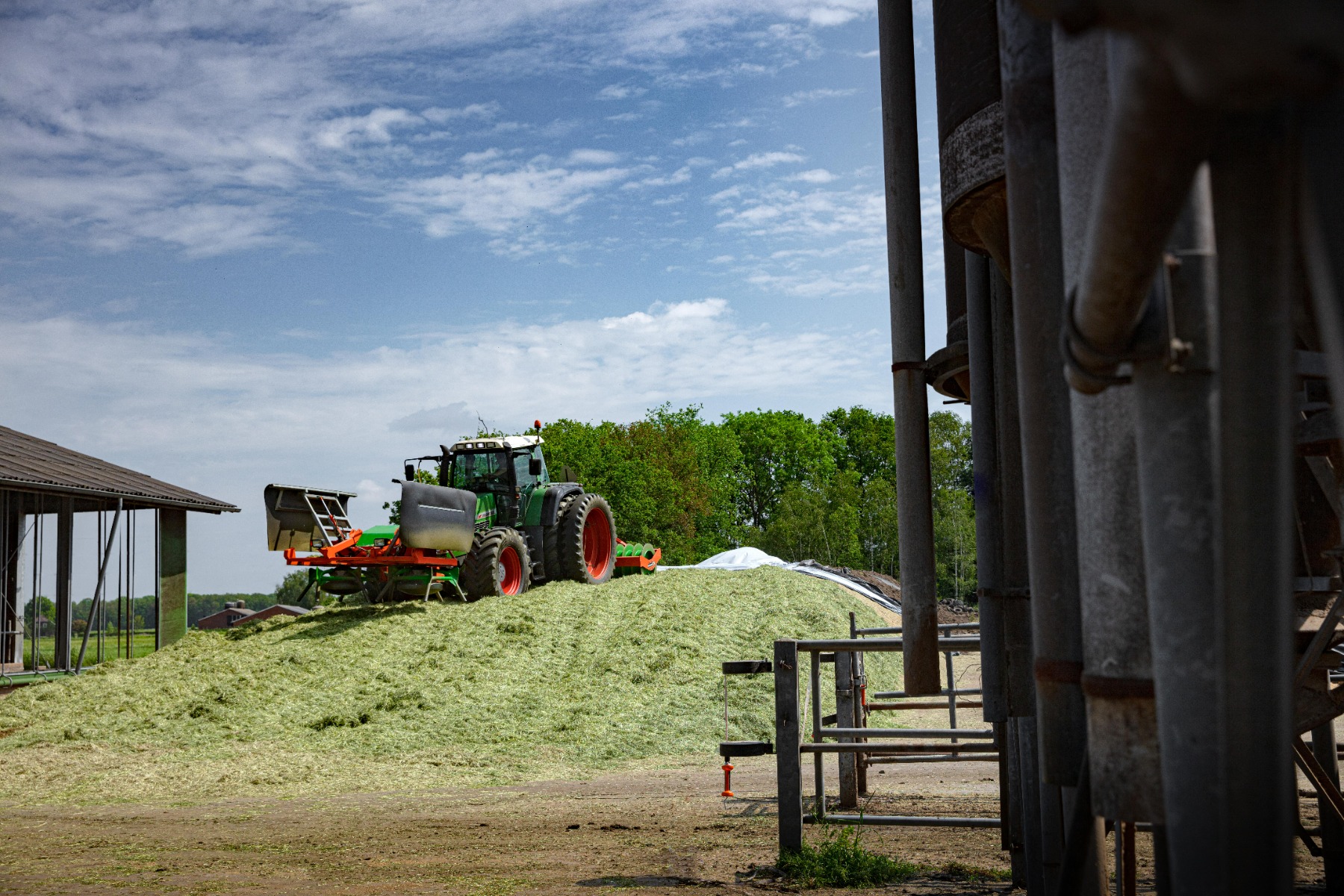We use cookies to make your experience better. To comply with the new e-Privacy directive, we need to ask for your consent to set the cookies. Learn more.
Good grass silage is essential for high-quality roughage
Lots of types of forage can be ensilaged, but the most common silages are silage grass and silage maize. Good grass silage is essential for high-quality roughage. This in turn keeps cows healthier cow and improves milk yields.
Making silage is a natural, sustainable process. Silage is naturally preserved green fodder that can be fed to livestock in winter. It contains carbohydrates such as sugars, which are a source of food for animals. If oxygen is present, bacteria can convert these sugars into carbon dioxide, which reduces their nutritional value. For this reason, it’s important to create a silage pile in which no oxygen is present.


If the silage is well covered and airtight, anaerobic fermentation occurs. In this process, lactic acid bacteria convert the sugars into lactic acid. If the concentration of lactic acid is high enough, the feed is safe from attack by other bacteria which cannot resist the high acidity, and most of the carbohydrates are preserved for livestock.
Various factors affect the quality of silage grass. The exact moment of mowing is important; factors such as the weather and time of day have to be taken into account. Compacting using the right method and the DM percentage also play a major role. After the grass has been left on the land to dry for a maximum of 24 hours, it’s collected for ensilaging. Every extra night it’s left outside, the more sugar is lost. Good compaction helps reduce the pH of the silage rapidly.
8 Tips for the best silage
- Dry matter: Make sure the DM percentage of the grass or corn is 30 to 40%. This is the ideal level for facilitating compaction.
- Acces route: Make sure that the silage base and the access route to the silage are clean. Feed residues that end up in the silage are a source of harmful bacteria. Keeping the access route clean also helps prevent soil ending up in the silage.
- Spreading: Immediately spread the silage into thin layers, and drive over it carefully to compact it. A 30-cm layer is more than thick enough. The Holaras silage spreader and silage packer is an indispensable help here.
- Leave a dip in the centre and the edges: Make sure the edges of the silage are higher than the middle, so that these edges can be compacted well.
- Do not!: Do not drive the tractor over ‘lasagne silage heap' before new grass is placed on it. Driving over an open silage heap doesn’t remove air, it is actually more likely to force fresh air back into the top layer.
- Pay attention: Pay extra attention to pulling the mass apart if the cut grass exits the container in a solid block.
- Entire silage heap: Drive over the entire silage heap. A slope will then be left at the back where the tractor enters; it may seem like wasted space, but in fact it’s not a problem. Finishing the rear part squarely at the end doesn’t facilitate compaction at all.
- Sealing: Seal the silage airtight immediately after compacting with the tractor. The silage cover machine can neatly cover the silage in a short time, removing the need for manual work.
Work quickly and efficiently with a Holaras silage spreader and silage packer!
Gerelateerde artikelen

 de
de  nl
nl 